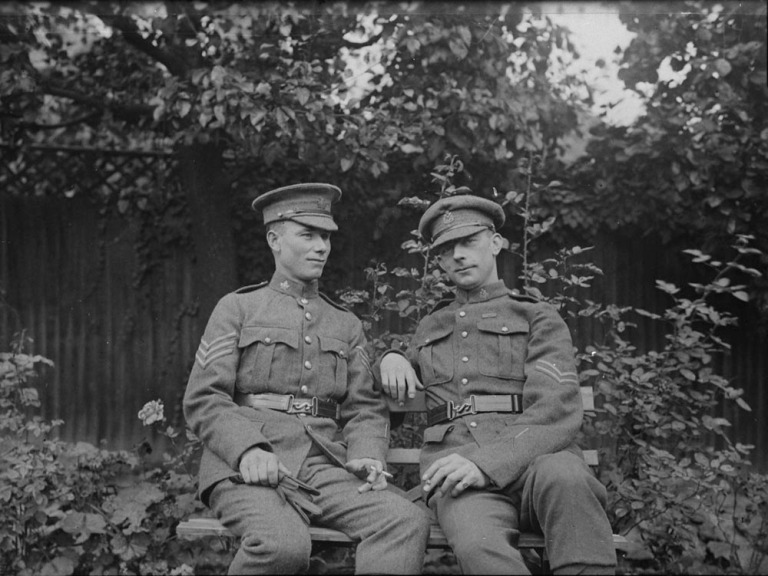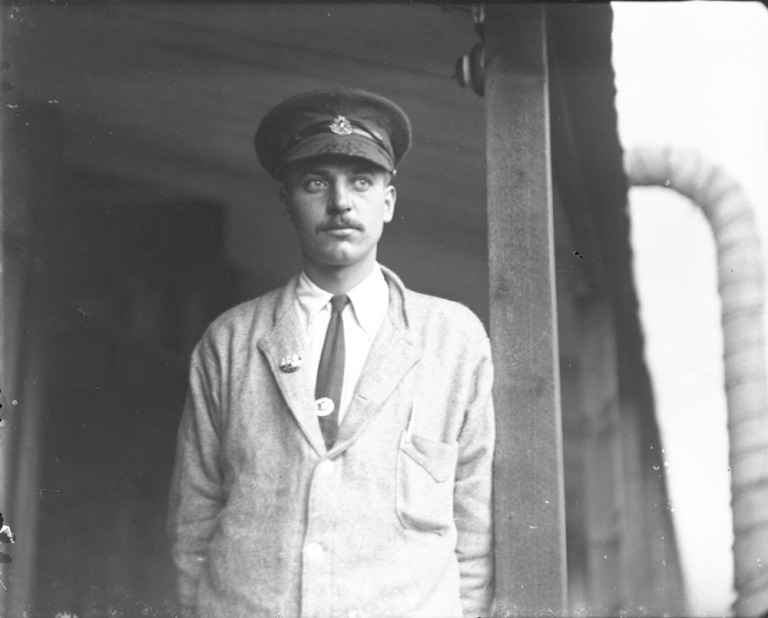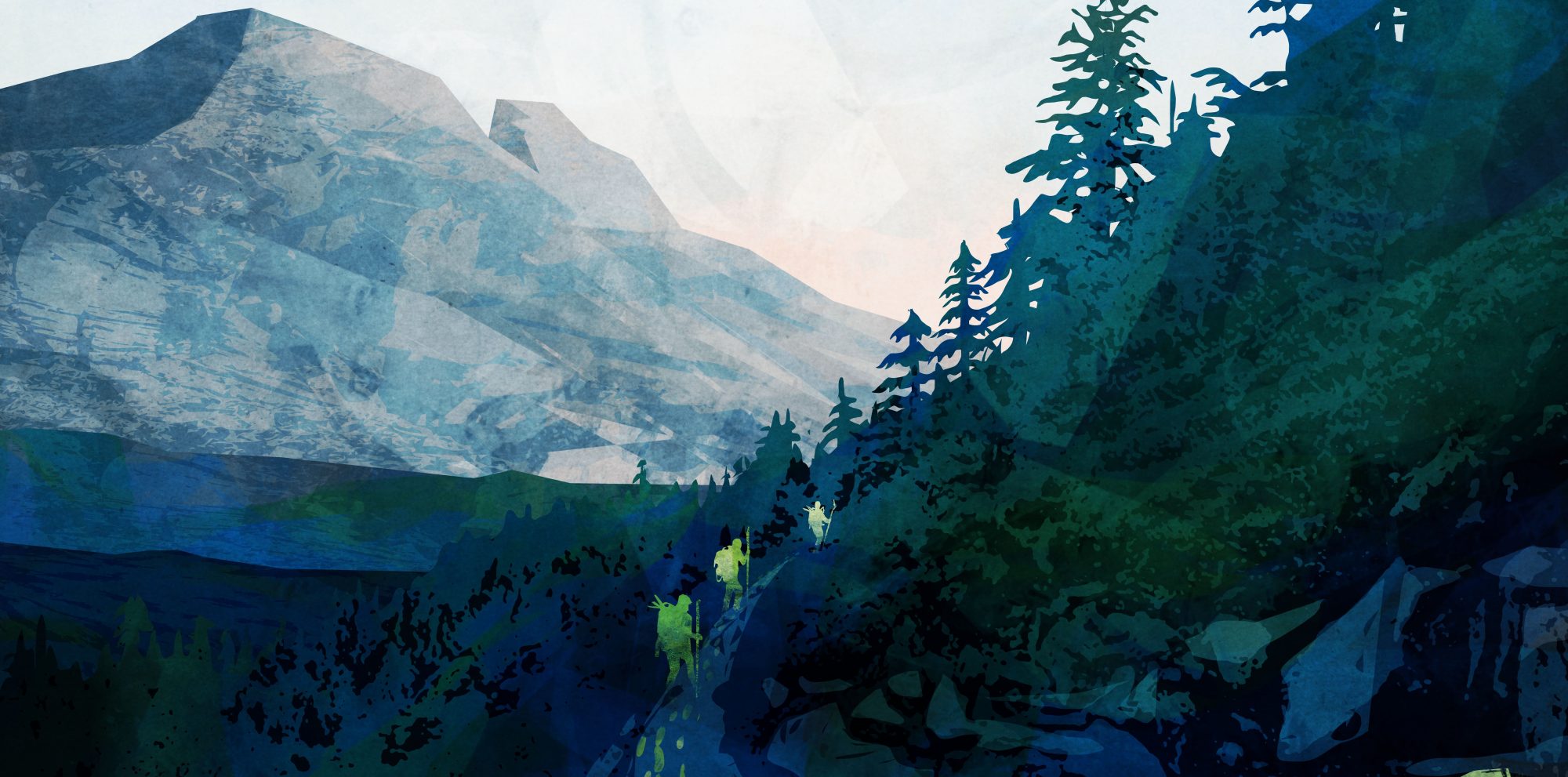In Jasper National Park there are five mountains named for First World War Victoria Cross recipients with Alberta connections. The peaks are located within a series of mountains known as the Victoria Cross Ranges. The names of these mountains honour Private John Chipman Kerr, Private Cecil John Kinross, Captain George Burdon McKean, Private John George Pattison and Sergeant Raphael Louis Zengel.
The Victoria Cross was established in 1856 by Queen Victoria to recognize military personnel who demonstrated bravery when faced with the opposition during wartime. It is the highest military decoration that can be bestowed upon a soldier in the British Commonwealth. This post will look at the recipients of the Victoria Cross who the mountains in Jasper National Park are dedicated to.
Mount Kerr
Mount Kerr is named in honour of Private John Chipman Kerr, who served in the Alberta raised, 49th Battalion (Edmonton Regiment), Canadian Expeditionary Force. Kerr, originally from Fox River, Nova Scotia, moved to Spirit River, Alberta before enlisting for service in 1915.

On September 16, 1916, during the Battle of the Somme, Kerr and his unit prepared to ambush German soldiers. As the lead bayonet man, Kerr was 30 metres ahead of his comrades and exchanged fire with enemy troops. The Germans, believing that they had been surrounded, surrendered to Kerr. Sixty-two prisoners were captured and 250 yards of enemy territory was seized. Kerr was injured and lost a finger in the attack, but reported back for active duty before the wound had been fully dressed.
For his actions on that day, Private Kerr was awarded the Victoria Cross.
After the war, Kerr returned to farming, worked in the Turner Valley oil fields and as a forest ranger. He enlisted in the Second World War and transferred to the Royal Canadian Air Force. John Kerr died in Port Moody, British Columbia in February 1963. His Victoria Cross is displayed at the Canadian War Museum in Ottawa.
Mount Kinross
Mount Kinross was named for Private Cecil John Kinross. Originally from England, he had immigrated to a rural Alberta farm with his family at the age of 16. He enlisted in the 51st Battalion, Canadian Expeditionary Force in 1915 and later transferred to the 49th Battalion in France.

On October 30, 1917, during the Battle of Passchendaele in Belgium, Kinross’s unit was under intense artillery fire. Showing no concern for his own personal safety, he took off alone and charged towards the enemy, killing six soldiers and destroying their machine gun. His action inspired his comrades and their unit to advance 300 yards into enemy territory. Kinross was severely injured in the battle and did not return to the front lines.
Kinross received the Victoria Cross for his act of bravery that day.
His citation announced “he showed marvellous coolness and courage, fighting with the utmost aggressiveness against heavy odds until seriously wounded.” Private Kinross was honourably discharged and he returned to Lougheed, Alberta, where he lived until his death in June of 1957. His Victoria Cross remains with his family and the miniature is on display at the Loyal Edmonton Regiment Museum in Edmonton.
Mount McKean

Mount McKean is dedicated to Captain George Burdon McKean, who immigrated to Canada from England in 1902 to join his brother on a farm near Lethbridge. He studied at Robertson College, a theological school in Edmonton, and was an assistant minister at the time of his enlistment in 1915. McKean first enlisted as a Private in the 51st Battalion, Canadian Expeditionary Force and later became a Lieutenant in the 14th battalion (Royal Montreal Regiment).

In April of 1918, while stationed near Gavrelle, France, McKean led his troops in a raid against German forces. When his men hesitated, McKean took off alone towards the enemy’s heavily fortified trench, taking out two of their soldiers. This move instilled confidence in his unit, who quickly followed to seize the trench and capture its remaining soldiers. Lieutenant McKean was praised for his actions and was awarded the Victoria Cross. His citation reads “This officer’s splendid bravery and dash undoubtedly saved many lives, for had not this position been captured, the whole of the raiding party would have been exposed to dangerous enfilading fire during the withdrawal.”
In addition to the Victoria Cross, McKean also received the Military Cross and the Military Medal for his service during the war. He was later promoted to Captain. After the war, he returned to England. He was killed in an industrial accident in November 1926. In addition to being commemorated by Mount McKean, in 2003, a public square in Cagnicourt, France was named La Place George Burdon McKean. His Victoria Cross is in the collection of the Canadian War Museum.
Mount Pattison

Mount Pattison is dedicated to Private John George Pattison. He was born and raised in England and moved to Canada in 1906 with his wife and four children. He worked for the Calgary Gas Company. In 1916, at 40 years of age, he enlisted in Calgary with the 50th (Calgary) Battalion, Canadian Expeditionary Force.
In April of 1917 at Vimy Ridge, the 50th Battalion was advancing towards German occupied territory when they were confronted with heavy machine gun fire. Pattison charged forward to face the opposition and hurled grenades at the enemy which allowed him to take out the remainder of the German crew. He was awarded the Victoria Cross for his actions and credited with making further advances possible. Pattison was one of four Canadians to receive the Victoria Cross at the Battle of Vimy Ridge.
A few weeks later, Private Pattison was killed in action on June 3, 1917, during an attack on a German occupied power station in Lens, France. In addition to the mountain named in his honour, Pattison Bridge over the Elbow River in Calgary commemorates his service and sacrifice.
Mount Zengel

Mount Zengel is named in honour of Sergeant Raphael Louis Zengel, who came to Canada from Minnesota at a young age. The Zengel family initially settled on a homestead in Saskatchewan before Raphael enlisted to the 45th (Manitoba) Battalion, Canadian Expeditionary Force in 1915. He later became a sergeant in the 5th (Western Cavalry) Battalion.
On August 9, 1918 near Amiens, France, on the second day of a massive campaign against German forces, Sergeant Zengel’s platoon came under heavy machine-gun fire. He rushed ahead and met the defensive unit, killing two of their machine gunners and forcing the others to scatter. He was cited for his excellent work through the attack and for showing utter disregard for his own personal safety.
Sergeant Zengel was awarded the Victoria Cross for his contribution at the Battle of Amiens. (He had previously been awarded the Military Medal for his service at the Battle of Passchendaele). After the war he became a long-time resident of Rocky Mountain House, Alberta. He died in February 1977. Branch No. 8 of the Royal Canadian Legion in Rocky Mountain House is named the R.L. Zengel V.C. to commemorate his award distinction. In 1936, the Geographic Board of Canada named Zengle Lake in Saskatchewan in his honour, misspelling his name in the process.

The tribute to these soldiers in 1951 was made possible by the co-operation of federal and provincial governments. However, at the time, the proposal created controversy. The issue’s resolution would bring about the creation of the Victoria Cross Ranges and an agreement between the Governments of Alberta and Canada still governs geographical naming in in Alberta today. That will be the subject of our next place names post.
For more information on soldiers who served in the First World War, Library and Archives Canada provides digital records on the soldiers who enlisted in the Canadian Expeditionary Force.
Written by: Erin Hoar, Historic Resources Management Branch Officer
Sources:
Canadian Great War Project. (Accessed August 21, 2014).
Geographical Names Program Research File #83-D/16, Jasper Park. In custody if the Historical Resources Management Branch.
Geographic Board of Alberta Minutes: March 28, 1946-November 19, 1949.
Geographic Board of Alberta Minutes: January 22, 1950-December 17, 1954.
Library and Archives Canada. “Soldiers of the First World War: 1914-1918.” (Accessed August 22, 2014).
National Defense and the Canadian Forces. “Canada’s Victoria Cross.” (Accessed August 29, 2014).
National Defense and the Canadian Forces. “Victoria Cross – First World War, 1914-1918.” (Accessed August 21, 2014).
Nix, James Ernest. “McKean, George Burdon.” Dictionary of Canadian Biography, vol. 15, University of Toronto/Université Laval, 2005. (Accessed August 29, 2014).
Peak Finder. (Accessed August 21, 2014).
Summit Search: Mountain Community. (Accessed August 29, 2014).


Thank you for the information about Canadian soldiers on this Remembrance Day. You might be interested in the site that local author Debbie Marshall hosts: http://rememberingfirstworldwarnurses.blogspot.ca/ It is dedicated to the Canadian nurses who served in WW I.
I am glad that you enjoyed the blog post Elaine. Thank you for sharing the link to the WWI nurses.